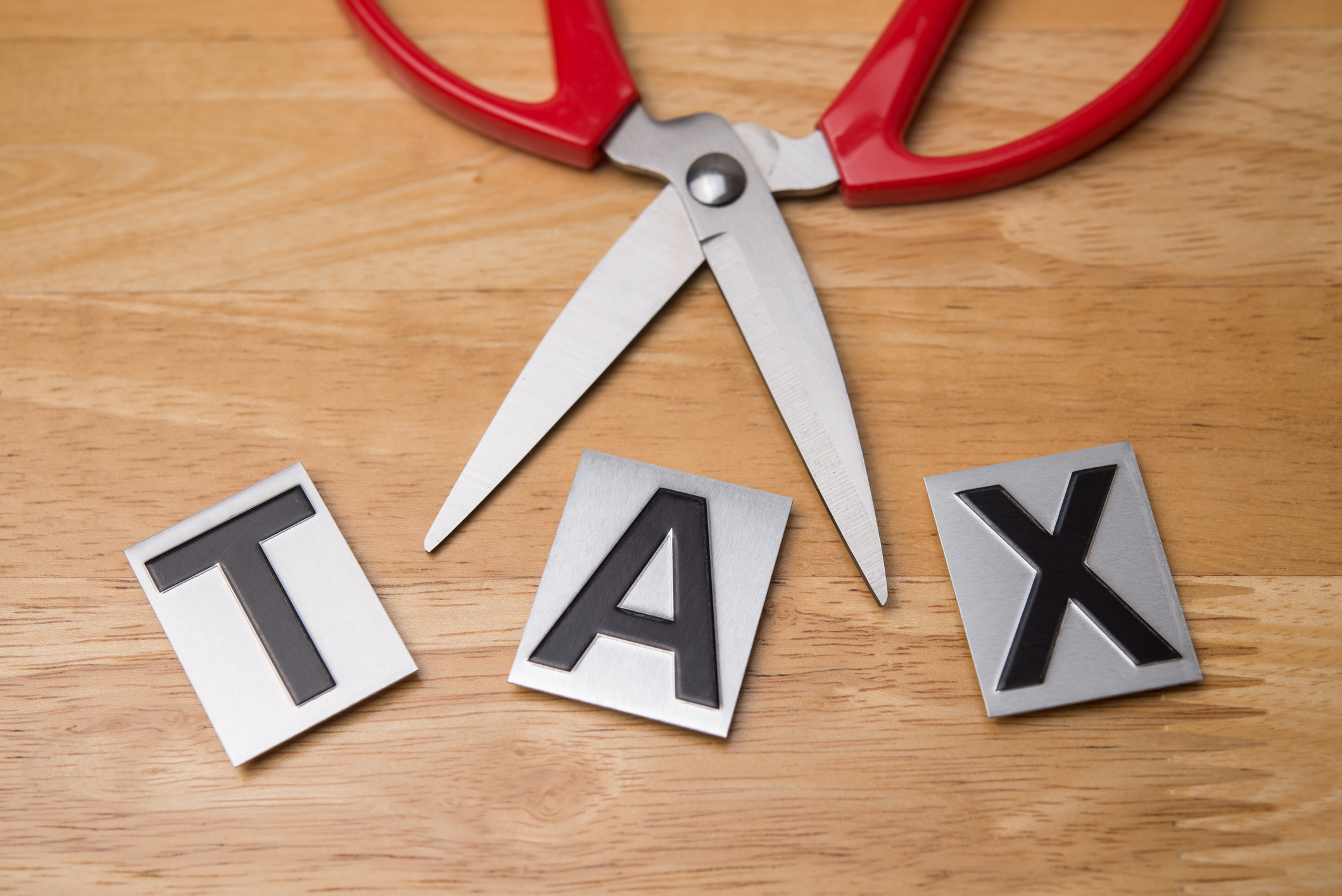‘My Etsy Shop is Dead’: Vendors Cry for Help Amid Trump’s Tariffs
Small businesses are struggling to thrive as they absorb the Trump administration’s new wave of tariffs.


Mother’s Day is approaching, and purchasing a personalized gift like jewelry or art from your favorite vendor could be more expensive this year.
Small businesses, which make up 98% of retailers and support more than 13 million U.S. jobs, are bearing the brunt of Trump’s tariffs, according to the National Retail Federation (NRF). In their case, the unintended fallout in the broader trade dispute has been the “American Dream.”
The tariffs, aimed at China and our closest trading partners, are forcing small businesses to absorb increased expenses of imported materials or pass them along to consumers like you. For small independent vendors on sites like Etsy, a global online marketplace, the Trump administration’s latest tariff policy could make matters worse.
From just $107.88 $24.99 for Kiplinger Personal Finance
Become a smarter, better informed investor. Subscribe from just $107.88 $24.99, plus get up to 4 Special Issues

Sign up for Kiplinger’s Free Newsletters
Profit and prosper with the best of expert advice on investing, taxes, retirement, personal finance and more - straight to your e-mail.
Profit and prosper with the best of expert advice - straight to your e-mail.
Effective May 2, 2025, the United States eliminated the de minimis tax exemption for Chinese-origin goods valued under $800. The loophole allowed imports from China, including those shipped via the international postal network, to enter the U.S. duty-free.
For many business owners on Etsy, which is best known for handmade products, tariffs have impacted the cost of their supplies and profits. At the same time, some have already noticed a dip in sales as customers react to price hikes.
“I’m dropping off Etsy packages and I’m feeling so bummed. I just feel like my Etsy shop is going to die, my Etsy shop is dead,” Emmalyn Perez said in a TikTok post. “I have to import some things. What am I going to do? I can’t afford those anymore.”
Perez, who owns BewitchedStitchery, sells custom needle minders and cross-stitch patterns on Etsy. The custom needle minders sold in the shop are produced in China, Perez explains, because the machines used to produce them are illegal in the U.S.
The onslaught of tariffs enacted by the Trump administration has small business owners bracing for impact. Here’s what it could mean for you.
What is the de minimis exemption?
The “de minimis” exemption is a provision that allowed shipments of goods worth $800 or less to come into the United States duty-free, and has been eliminated for China and Hong Kong as of May 2, 2025.
The measure, which is part of Section 321 of the Tariff Act, streamlined the import process for low-value goods by reducing duties, fees, and other taxes. The Trump administration rolled back the exemption, citing concerns about the flow of fentanyl and other illicit substances into the United States.
Just like the de minimis provision benefited shoppers of low-cost Chinese e-commerce platforms like Temu and Shein — it also helped small business owners who are more likely to ship their products in smaller quantities.
Now, with the end of the de minimis exemption, consumers will be facing tariffs as high as 145% for Chinese imports. The Trump administration also indicated the following:
- All low-value goods that previously qualified for the de minimis exemption are subject to a duty rate of either 30% of their value or $25 per item;
- This amount will increase to $50 per item after June 1, 2025, according to the White House fact sheet.
The impact will be big.
The latest data from the U.S. Customs and Border Protection (CBP) shows that 92% of all cargo that entered the U.S. in 2023 were de minimis shipments. CBP processed nearly 4 million de minimis shipments a day at the time, which was up from 2.8 million in 2022.
‘Harder for small retailers to thrive and even survive’
The Trump administration’s trade strategy has been blunt and centered on tariffs. To date, consumers can expect the following.
- All Chinese imports face a tariff of 145%, which could potentially reach 190% to 200% for some products.
- A 25% tariff on steel and aluminum could impact costs for jewelry makers, small craft breweries, and more.
- There’s a 10% baseline tax on most U.S. imports as of April 5, 2025.
- Reciprocal tariffs on 60 countries have been paused until July 9, but once they lift, the impact will be significant.
“These tariffs are making it harder for small retailers to thrive and even survive,” wrote NRF Vice President of Advocacy and Engagement, Meghan Cruz.
'I had to increase my prices'
The impact of tariffs has been so severe that some small business vendors have shut down shipping to other countries.
Heidi, who owns a yarn-dyeing business, told Kiplinger that she was considering deactivating shipments to countries like the Netherlands, Canada, and the United Kingdom as she evaluates how Trump’s tariffs impact her business expenses.
She sources yarn from Canada, which now faces additional costs to import to the U.S. A pack of yarn which includes 10 units used to cost her $72.90 as of March 8, 2025. After tariffs, the same pack of yarn costs $84.90, without counting additional taxes and shipping costs which have also increased. That’s a 16% price hike.
“The company I source my yarn from had previously disclosed tariff costs but that information isn’t available anymore,” Heidi said. “I don’t know what’s going on.”
She also pointed out that as she’s absorbed higher costs for materials, she’s had to pass some of that price hike along to consumers. As a result, she’s seen fewer large orders coming in this past month.
“I had to increase my prices, and because of that, my order volume has decreased substantially,” Heidi told Kiplinger, her shop has been running since 2019.
Another Etsy vendor, based in Canada, took to social media to express their frustration over the removal of the de minimis exemption.
Nicole deactivated her ability to ship to America, which comprised 75% to 80% of her sales on two of her Etsy shops.
In her case, a technicality would cause her U.S.-based consumers to take on steep tariffs.
“Because the bulk of my materials come from China, I have no ability to say ‘made in Canada’ even though I do all the work here in customizing, assembling, and engraving,” said Nicole. “Not only that, the customers in America will be hit by a 145% tariff. That means if they spend $15 on one of my necklaces, they are going to spend $21.75 to pay the tariff on top of that. This is going to devastate so many businesses.”
“I have to rethink my career,” she added.
Read More on Tariffs
- How Tariffs Work and What They Mean for You in 2025
- What’s Happening With Trump’s Tariffs? New Rates and Trade Talks
- Trump Tariff Plan: Which States Would Be Hit the Hardest?
Profit and prosper with the best of Kiplinger's advice on investing, taxes, retirement, personal finance and much more. Delivered daily. Enter your email in the box and click Sign Me Up.

Gabriella Cruz-Martínez is a finance journalist with 8 years of experience covering consumer debt, economic policy, and tax.
Gabriella’s work has also appeared in Yahoo Finance, Money Magazine, The Hyde Park Herald, and the Journal Gazette & Times-Courier.
As a reporter and journalist, she enjoys writing stories that empower people from diverse backgrounds about their finances, no matter their stage in life.
-
 How to Protect Yourself and Others From a Troubled Adult Child
How to Protect Yourself and Others From a Troubled Adult ChildThis case of a violent adult son whose parents are in denial is an example of the extreme risks some parents face if they neglect essential safety precautions.
-
 To Build Client Relationships That Last, Embrace Simplicity
To Build Client Relationships That Last, Embrace SimplicityAs more automation becomes the norm, you can distinguish yourself as a financial professional by using technology wisely and prioritizing personal touches.
-
 Client Demand Is Forcing Advisers to Specialize: How to Deliver
Client Demand Is Forcing Advisers to Specialize: How to DeliverThe complexity of wealthy clients' needs — combined with AI and consumer demand — suggests the future of financial planning belongs to specialized experts.
-
 Holiday Tax Scams 2025: 'Tis the Season to be Wary
Holiday Tax Scams 2025: 'Tis the Season to be WaryTax Scams Navigating tax tricks of the holiday season may be daunting, but don't let that destroy your festive spirit
-
 Ask the Editor, December 19: Itemized Deductions
Ask the Editor, December 19: Itemized DeductionsAsk the Editor In this week's Ask the Editor Q&A, Joy Taylor answers questions on itemized deductions claimed on Schedule A of Form 1040
-
 Retirees in These 7 States Could Pay Less Property Taxes Next Year
Retirees in These 7 States Could Pay Less Property Taxes Next YearState Taxes Retirement property tax bills could be up to 65% cheaper for some older adults in 2026. Do you qualify?
-
 Estate Tax Quiz: Can You Pass the Test on the 40% Federal Rate?
Estate Tax Quiz: Can You Pass the Test on the 40% Federal Rate?Quiz How well do you know the new 2026 IRS rules for wealth transfer and the specific tax brackets that affect your heirs? Let's find out!
-
 'The 'Mamdani Effect' in New York: Can the City Afford a Millionaire Tax?
'The 'Mamdani Effect' in New York: Can the City Afford a Millionaire Tax?State Tax Will higher income taxes drive the wealthy to flee New York in 2026?
-
 The November CPI Report Is Out. Here's What It Means for Rising Prices
The November CPI Report Is Out. Here's What It Means for Rising PricesThe November CPI report came in lighter than expected, but the delayed data give an incomplete picture of inflation, say economists.
-
 Law Reversal Looming? Trump Eyes 2026 Gambling Winnings Tax Change
Law Reversal Looming? Trump Eyes 2026 Gambling Winnings Tax ChangeTax Deductions It's no secret that the IRS is coming after your gambling winnings in 2026. But how long will that last?
-
 Trump's Plan to Eliminate Income Tax: 7 Things to Know Now
Trump's Plan to Eliminate Income Tax: 7 Things to Know NowTax Policy The potential consequences of eliminating taxes in favor of Trump tariffs could impact everything from inflation to Social Security and might give some U.S. taxpayers pause.